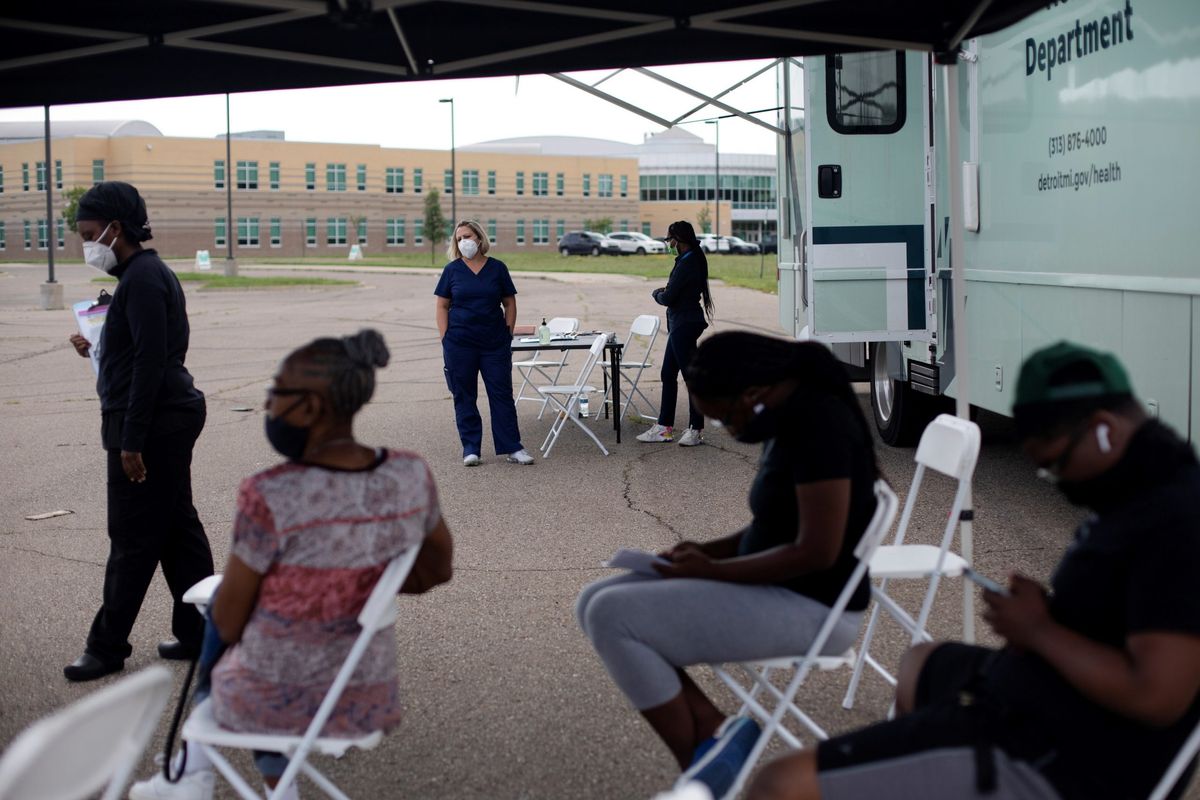Home schooling is up in the US and public schools are down. Why?

A few minutes every morning is all you need.
Stay up to date on the world's Headlines and Human Stories. It's fun, it's factual, it's fluff-free.
“At school, children have to follow a certain pattern, and there’s bullying, belittling — compared to being home where they’re free to be themselves,” said Charmaine Williams, a mother of two children.
What’s going on?
- It’s nearing the end of the summer which, for many parents, means it’s time for the kids to go back to school.
- But, this year is different. Many parents have decided to either just do the job themselves or signing them up for a home schooling program.
Why are kids being home-schooled?
- So, home schooling doesn’t always mean that learning takes place at the home or under the supervision and direction of parents.
- Oftentimes, many families enrol in home schooling programs where the students can come together once a week and complete assignments at their own pace at home.
- While the height of the pandemic may be gone, this sudden increase in home-schooled students is only a recent thing.
- And, this been confirmed by the country’s Census Bureau, which reported that the rate of households home schooling their children rose to 11% by September 2020, which is more than double from 5.4% just six months ago.
- “At school, children have to follow a certain pattern, and there’s bullying, belittling — compared to being home where they’re free to be themselves,” said Charmaine Williams, a mother of two children. “There’s no turning back for us now,” she added. “The pandemic has been a blessing — an opportunity to take ownership of our children’s education.”
How did public schools handle the pandemic?
- The reality of the lockdown last year was that none of us were really that prepared, but public schools were especially unprepared.
- A survey by The Rand Corporation spoke with over 1,000 principals in the United States, and showed that when asked about whether or not they had everything they needed to be fully prepared for a lockdown, only 7% of principals said that they had everything in place.
- “On March 13th, 2020, I was teaching my 10th grade English class, and I remember being in my classroom when a student informed me that we were going home for the rest of the day,” Simone Keys, a high school teacher from Louisiana with over 20 years of experience, told TMS.
- “Teachers and students alike had little time to prepare, and nobody knew just how long we would be out of the school. We had no idea that we would not be back in the building for nearly 6 months.”
- A large reason for this lack of preparedness is largely due to a lack of funding for the country’s public education system.
What’s going on with the public education system?
- Bruce Baker, a finance expert, showed that the US government drastically underfunds the public education system in a study that figures out exactly how much schools are missing out on.
- The model, which was created by The Century Foundation, estimates the investment needed in every school district in the country – more than 13,000 in total – and in all 50 states to bring students up to national average outcomes.
- According to his study that was published summer of 2020, the US is underfunding its K-12 public schools by nearly US$150 billion annually.
- For many Americans, saying public schools are underfunded really isn’t a surprise. And, the majority of parents identify underfunding as the biggest problem in education, according to a survey by Hart Research Associates in 2017.
- With many parents starting to recognize that there are options to educate their kids outside of the public education system, many now are.
What comes next?
- Teachers are among the lowest-paid professionals in the market, earning nearly 20% less than other individuals with similar education and experience.
- US President Joe Biden, whose wife is an educator, has also been very vocal about his support of teachers, so much so that one of his campaign promises from 2020 was to increase salaries for teachers.
- On his campaign website, President Biden says that he “will triple funding for Title I, the federal program funding schools with a high percentage of students from low-income families, and require districts to use these funds to offer educators competitive salaries and make other critical investments prior to directing the funds to other purposes.”
- Part of the President’s American Rescue Plan allocated US$125 billion to go toward public education funding.
- But, the thing is that still doesn’t cover the total annual loss that these schools see, not to mention there is no guarantee that it will go to support teachers.
- And, as of now, the Biden administration has yet to actually deliver on the President’s campaign promises to “require districts to use these funds to offer educators competitive salaries.”
Have a tip or story? Get in touch with our reporters at tips@themilsource.com




Comments ()